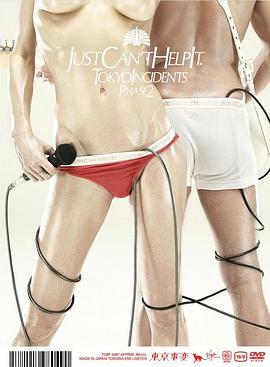Can a Cold毛巾 help reduce swelling?
The use of a cold towel to reduce swelling is an effective method that can help alleviate the condition. By applying a cold towel to the affected area, the flow of blood to the region is decreased, which in turn reduces the amount of fluid accumulation that causes swelling. This is because the cold temperature constricts the blood vessels, limiting the amount of blood that can flow into the area. As a result, the swelling is reduced, and the affected area can begin to heal more effectively.
Table of Contents
Introduction

What is swelling?
How can a cold毛巾 help reduce swelling?
When should you use a cold毛巾 to reduce swelling?
When should you not use a cold毛巾 to reduce swelling?
Other methods to reduce swelling
Conclusion
Introduction
Swelling is a common problem that can occur for a variety of reasons, including injuries, infections, and even exposure to heat or cold. In most cases, swelling is harmless and will resolve on its own over time. However, in some cases, it can be painful and affect the function of the affected area. For this reason, it is essential to find ways to reduce swelling quickly and effectively. One common remedy that people often turn to is using a cold毛巾 to apply onto the affected area. But does it really work? This article will explore the science behind using a cold毛巾 to reduce swelling and when it is – and isn't – a good option.
What is swelling?
Swelling is the accumulation of fluid in the body's tissues, causing an increase in size. It is usually caused by an injury or infection, which triggers the body's inflammatory response. The inflammatory response is a complex process that involves the release of chemicals and white blood cells that help fight off invaders such as bacteria or viruses. As part of this response, the capillaries in the affected area dilate (expand), allowing more blood to flow through them. This increased blood flow brings more white blood cells to the site of the injury or infection, helping to fight off the invaders. However, it also causes the tissues to become more permeable (porous), allowing fluid to leak out into the surrounding tissues, leading to swelling.
How can a cold毛巾 help reduce swelling?
The principle behind using a cold毛巾 to reduce swelling is based on the concept of cryotherapy. Cryotherapy involves using low temperatures to help reduce inflammation and swelling. The cold temperature constricts (narrows) the capillaries, reducing the amount of blood flowing through them. This decreased blood flow reduces the amount of fluid leaking out into the surrounding tissues, helping to reduce swelling. At the same time, the cold temperature also helps to numb the nerves in the area, reducing pain and discomfort.

When should you use a cold毛巾 to reduce swelling?
Using a cold毛巾 to reduce swelling is usually recommended soon after an injury or shortly after the onset of symptoms. This is because applying ice or a cold毛巾 within the first few minutes can help limit the amount of damage to the tissues and reduce inflammation. However, it is essential to use caution when applying ice or a cold毛巾 directly to the skin. Avoid keeping the ice or cold毛巾 on the skin for more than 20 minutes at a time, as this can cause ice burns or other damage. It is also not recommended to use a cold毛巾 if the skin is already damaged or if there are any open wounds present.
When should you not use a cold毛巾 to reduce swelling?
Although using a cold毛巾 can help reduce swelling in most cases, there are certain situations where it is not recommended. For example, if you have certain medical conditions such as Raynaud's disease or diabetes, using a cold毛巾 may not be suitable. In addition, if you are pregnant or have any doubts about the safety of using a cold毛巾, it is best to consult a healthcare professional before proceeding.
Other methods to reduce swelling
In addition to using a cold毛巾, there are other effective methods to reduce swelling, including:
Elevation: Elevating the affected area above the level of the heart can help reduce swelling by improving blood flow and reducing fluid accumulation in the tissues. For example, if you have a swollen ankle, propping it up with a pillow while sitting or lying down can help reduce the swelling.
Compression: Wrapping the affected area with an elastic bandage (e.g., ACE bandage) can help apply pressure and reduce swelling. However, it is essential to use caution when applying compression, as too much pressure can cut off circulation. It is best to apply compression for no longer than 20 minutes at a time and check for any signs of discomfort or numbness.
Medication: In some cases, taking non-steroidal anti-inflammatory drugs (NSAIDs) such as ibuprofen or aspirin can help reduce inflammation and swelling. However, it is essential to consult a healthcare professional before taking any medication, especially if you have any underlying health conditions.
Heat Therapy: Although heat therapy is often used to relieve muscle soreness and stiffness, it should not be used to treat acute injuries or swelling. Heat can increase blood flow to the area, which can worsen swelling and inflammation. However, once the acute phase has passed (usually after 48-72 hours), heat therapy can be used to help improve circulation and promote healing.
Conclusion
Articles related to the knowledge points of this article:
Retrospection: The Revival of Vintage Jackets
How to Sew Childrens Ties: A Comprehensive Guide for Parents and Kids
Title: The Art of Tying a Tie: A Comprehensive Guide
The Fashion Charm of Blue Down Jackets
Shopping for a Down Jacket: A Guide to Staying Warm This Winter



